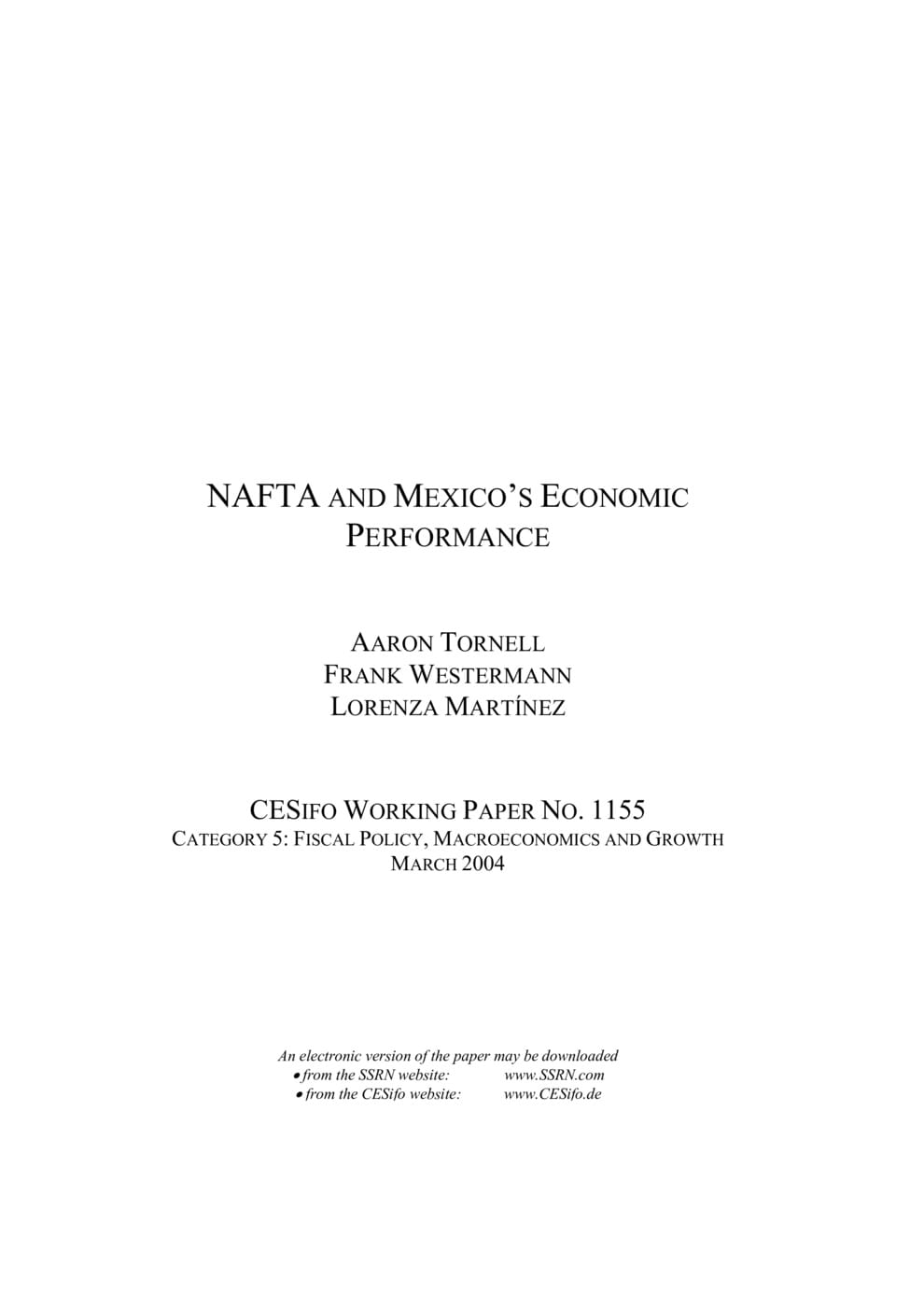NAFTA and Mexico's Economic Performance
CESifo, Munich, 2004
CESifo Working Paper No. 1155

Mexico, a prominent liberalizer, failed to attain stellar gross domestic product (GDP) growth in the 1990s, and since 2001 its GDP and exports have stagnated. In this paper we argue that the lack of spectacular growth in Mexico cannot be blamed on either the North American Free Trade Agreement (NAFTA) or the other reforms that were implemented, but on the lack of further judicial and structural reform after 1995. In fact, the benefits of liberalization can be seen in the extraordinary growth of exports and foreign domestic investment (FDI). The key to the Mexican puzzle lies in Mexico’s response to crisis: a deterioration in contract enforceability and an increase in nonperforming loans. As a result, the credit crunch in Mexico has been far deeper and far more protracted than in the typical developing country. The credit crunch has hit the nontradables sector especially hard and has generated bottlenecks, which have blocked growth in the tradables sector and have contributed to the recent fall in exports.